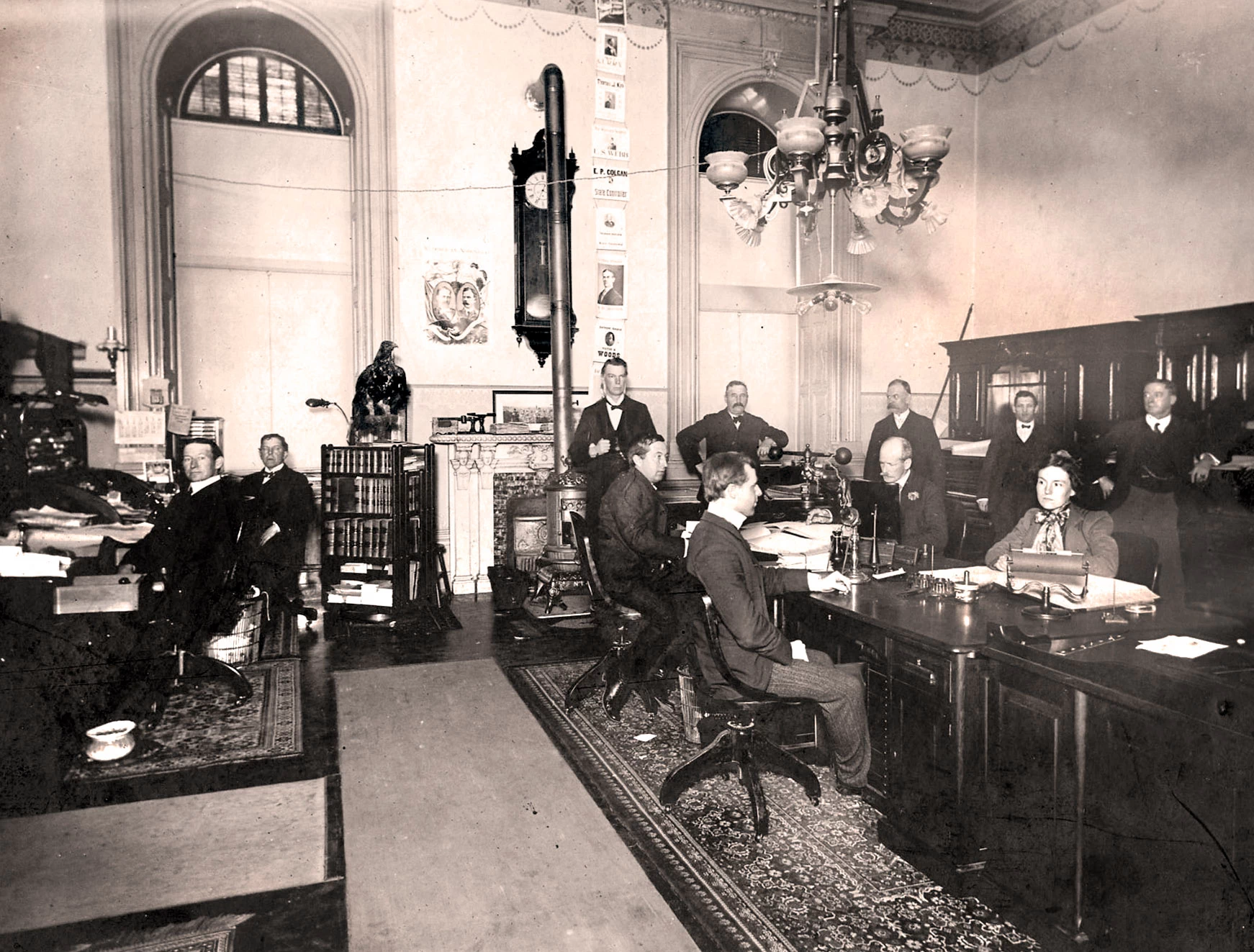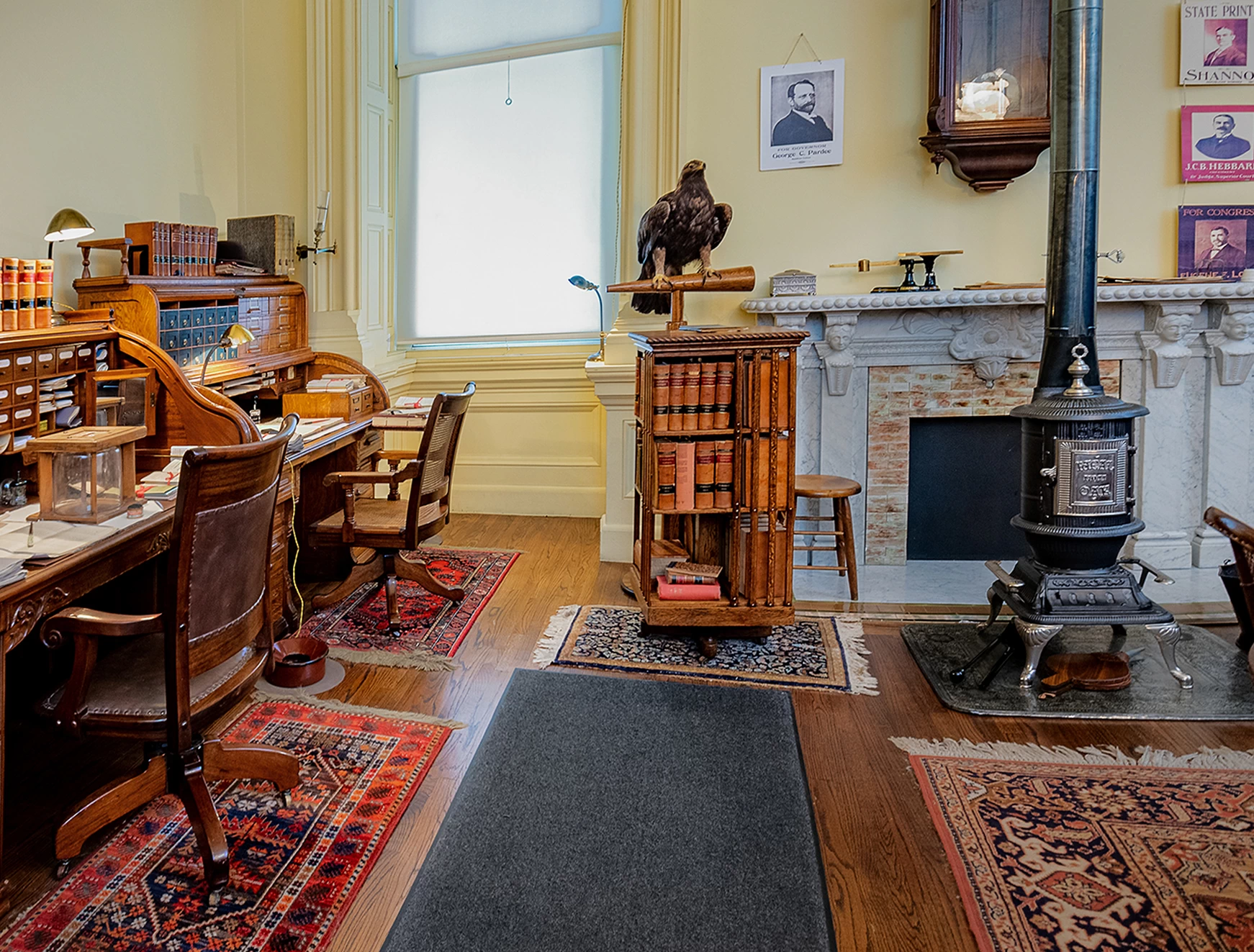1902 Secretary of State Office
The Secretary of State occupied this office in the Capitol building until 1975. The room has been restored to show how it might have appeared in 1902, when Charles F. Curry served as Secretary of State. His staff of 22 – two of whom were women – included a deputy, a statistician, recording clerks, a bookkeeper, an archivist, porters, watchmen, an engineer, a fireman, a janitor, and an elevator attendant.
The size and diversity of Curry’s staff hints at the multitude of tasks that were considered the Secretary of State’s responsibilities. The office was crowded and busy. Several standing desks and desks that sat two users at a time on opposite ends (called “partners desks”) made for an efficient use of space. The furniture was arranged to make room for as many people as possible.
The Secretary of State is an executive officer whose role directly influences the lives of Californians. They oversee state elections, which are an essential part of the public’s participation in the political process. The Secretary of State files the campaign statements of all candidates, directs and verifies ballot counts, and administers voter registration.
In addition to their important role in state elections, the Secretary of State has numerous other responsibilities. A bill becomes law only after the Secretary has verified the bill’s content, assigned it a chapter number, and stamped it with the Great Seal of the State of California. The Secretary also oversees the standardization of weights and measures, receives and catalogues all legislative records, files articles of incorporation for new state corporations, and registers trademarks.
The Secretary of State has been an elected official and part of the executive branch since California achieved statehood. Their responsibilities, however, have changed over the years. Until 1889, the Secretary was charged with protecting and preserving all government documents as well as the state’s historical artifacts – including the 1849 and 1879 state constitutions. By that time, the task of organizing, cataloging, preserving, and storing the state’s growing archives had become unmanageable. J.D. Gilchrist was appointed the first Keeper of the Archives in 1889, working under Secretary of State William C. Hendricks. The Secretary also served as the State Librarian until 1861.
As the office with the largest number of employees, the Secretary of State was additionally responsible for the maintenance, repair, and upkeep of the Capitol building. Secretary Edwin Waite, who held the position from 1891 to 1894, famously climbed onto the Capitol roof during a violent rainstorm to repair a leak that threatened the Senate Chambers below.
The invention of the automobile added another responsibility to the Secretary of State’s office. From 1905 to 1915, the Secretary of State’s office issued vehicle registrations. As the number of cars in the state grew and the task became too unwieldy, the Department of Motor Vehicles was created.
Although aspects of the Secretary of State’s role have changed over time, their primary responsibility of election oversight has remained constant. If not, you can register today at the Secretary of State’s website.


